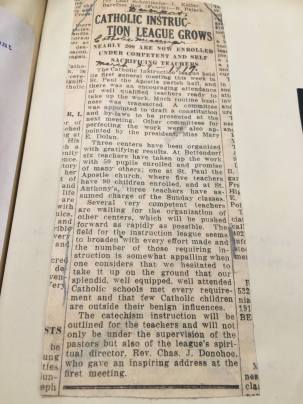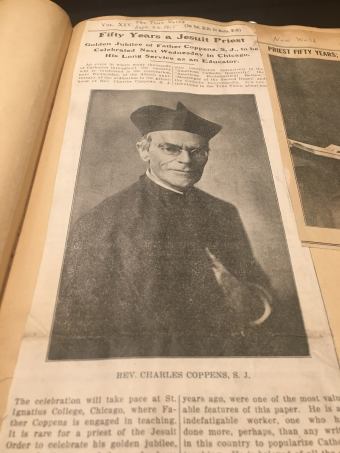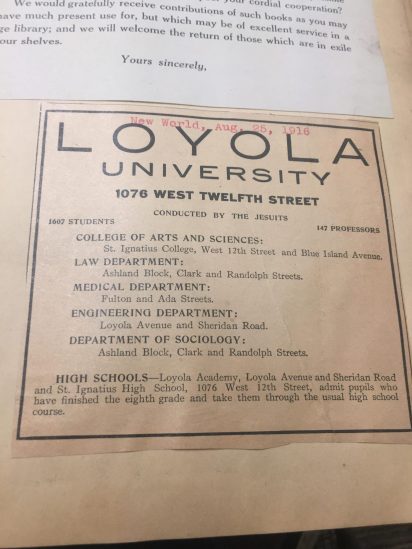This semester I have been an intern for the Jesuit Libraries Provenance Project at Loyola University Chicago. I was supervised by the director of the project, Dr. Kyle Roberts. My initial research question was to ask what could be uncovered about the theatre, performed, read and purchased by St. Ignatius College and Loyola Academy between 1880 and 1915. I thought initially that there wouldn’t be more evidence of theatre performance until the 1920s, but I was able to find many archival materials to support my research objective. I was able to explore the theatre history of Loyola University by examining photograph albums, scrapbooks, articles, programs, and course catalogues in Loyola’s Special Collections. From the beginning I defined what would constitute theatre for my research broadly as an interdisciplinary performance and public display. I found that the 1877 Webster’s Handy Dictionary, more true to the time of my research, defines “Theatre” as a physical space, “a play-house, a place of action or exhibition.” The word “Exhibition” is defined as “a setting forth, a public show.” After I developed a broad concept of theatre and theatre-making, I posed more questions about who was producing and performing in the plays I would come across, who was writing them, who were the audiences, where were they performed, what historical and political trends would be reflected in the plays chosen to be performed, how often were plays performed, what plays were performed at other Catholic institutions at this time, and how could the plays chosen to be performed be considered distinctly Jesuit?
With my research questions in mind, my week–to–week experience as an intern involved scheduling appointments with the campus archivists and spending four hours at a time per appointment photographing evidence to support my research objectives. I then spent a large amount of time organizing and categorizing my findings. I met with my supervisor weekly to discuss my project and ask him for help in guiding my research. I would occasionally make blog posts about my process because the Jesuit Libraries Provenance Project is a digital humanities effort to restore and explore the library materials of Loyola University in its beginnings. My blog did not fully reflect my work until the end of my semester when I could look at the entirety of my research and discern what was most significant to report. My blog does not include everything I discovered about other Catholic universities and instead focuses on St. Ignatius College and Loyola Academy. I developed a three-step plan for where I would like my research to take me next.
From the “St. Ignatius College Photograph Album, vol. i” (1884), the “St. Ignatius College Photograph Album, vol. iv” (1885-1907), and the “Photo Album of Loyola Academy” (1909), I was able to gather evidence of student performances in elaborate costumes. At this early point, I was able to speculate what plays were performed based off of costumes and handwritten labels by some of the photographs, as not all of the plays were identifiable. From the “St. Ignatius College Miscellaneous Programmes, Volume I” (1895-1898) and the “St. Ignatius College Miscellaneous Programmes, Volume II” (1880-1902), I learned a lot about the plays performed by the students of the college and the performative aspects of Elocution and Oratorical contests held by the college. I found answers for some of the unidentified plays from the photo album and stumbled on evidence about the director of a play called “The Upstart” Joseph I. Sullivan. I tracked him (along with several other similar individuals) from the time he was a student at St. Ignatius and an actor in plays as a part of The Loyola Dramatic Society, to a Gold Medalist in Elocution contests, to, perhaps, his role as the first dramatic instructor at St. Ignatius and the Loyola Academy. From the “History of St. Ignatius College” (1907-1916) and “History of St. Ignatius College” (1877, 1913-1917), I learned about plays written by St. Ignatius students and professors. I learned about an emphasis on French neoclassical theatre and a struggle with the rise of secularism to balance the performance of vaudeville forms of theatre and the performance of plays with a more “moral” theme to coincide with Christian Doctrine. Finally, from the “Catalogues of St. Ignatius and Loyola University” (1880-1910), I was able to learn about how the students that performed in plays were also very active in Oratorical and Elocution contests. I was able to learn about what the students studied, if they became a part of the Alumni Association (which was very active in performances at the colleges) and if they ultimately became instructors of dramatic disciplines.
At the end of this semester, I am very satisfied that I answered many of my initial research questions. For every play I came across, I was able to find out who performed the play (as well as their backgrounds), where it was performed, when it was performed, and what historical contexts the plays might reveal about Jesuit theatrical values. I do plan to continue my research, as I have become very invested in exploring my initial research questions further. Throughout my blog, I refer to my next steps as “Phase 2” of my research plan. I plan to return to Loyola’s Special Collections to see if any of the plays that I came across still exist in the archives, especially the original compositions. I plan to take a field trip to Marquette University or St. Ignatius College Prep to see about the documents on Jesuit theatre performance in their archives. Another avenue for research that I plan to explore, is investigating the documents posted from archives of the Catholic Resource Research Alliance. I am looking forward to the continuation of my project and I am very excited to have this incredible opportunity!
Thank you for reading, please stay tuned for posts this upcoming summer!






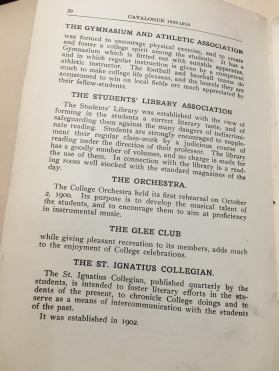

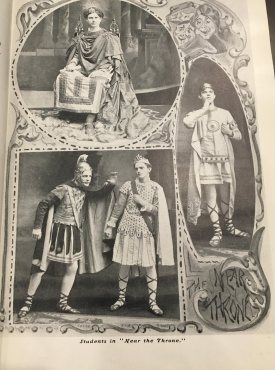










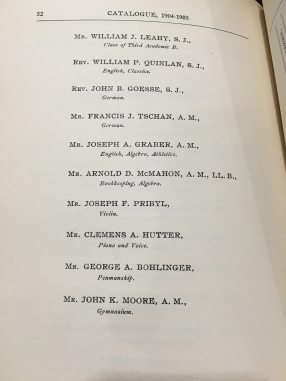












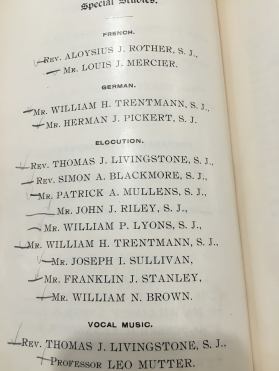













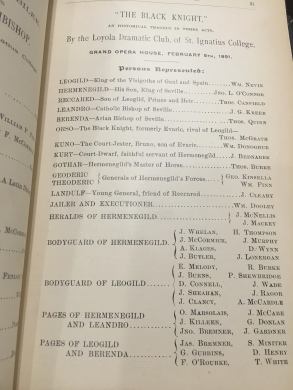






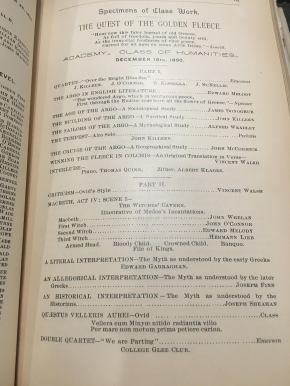














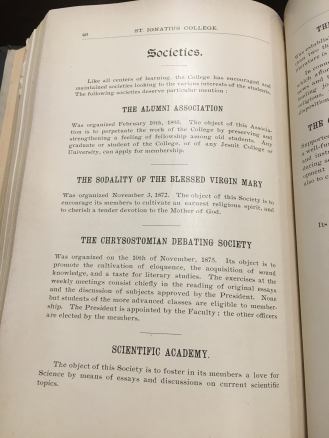





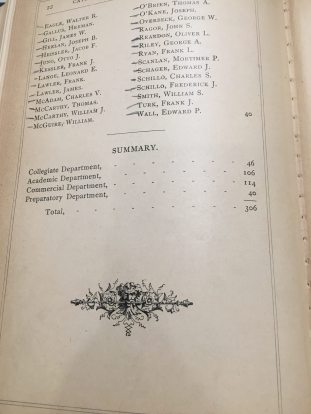





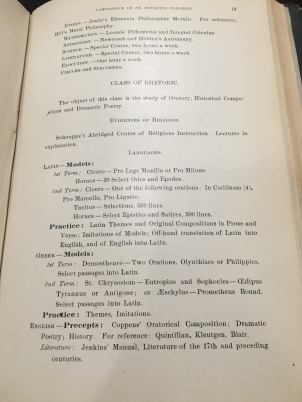









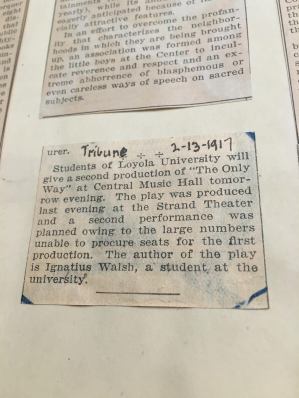



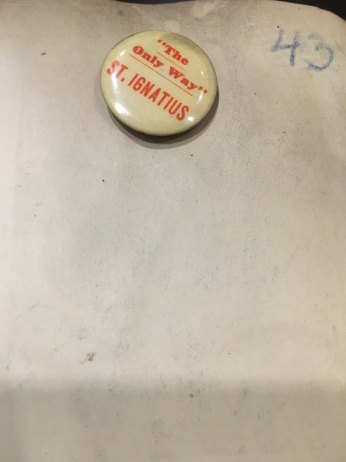















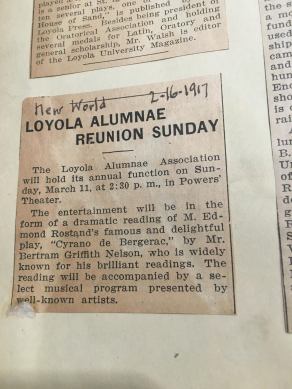


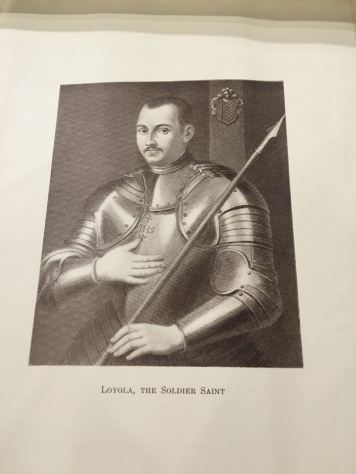

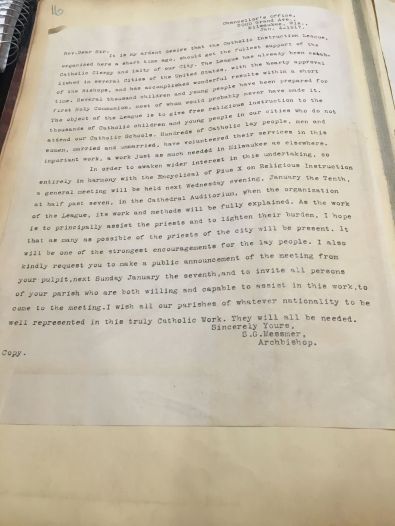
 It is interesting to consider the Catholic opinion of early twentieth century theatre–the review of “The Only Way” in The New World called present forms of theatre “deplorable”–when paired with the dilemma apparent with the formation of the Catholic Instruction League. It seems nearly reminiscent of anti-theatrical sentiment by the Puritans in Jacobean England. The Minstrel show and vaudeville performances could have been seen as corrupt, so it is interesting that St. Ignatius was occasionally involved in the production of these shorts of theatre (example: vaudeville at the Gymnastics Exercises).
It is interesting to consider the Catholic opinion of early twentieth century theatre–the review of “The Only Way” in The New World called present forms of theatre “deplorable”–when paired with the dilemma apparent with the formation of the Catholic Instruction League. It seems nearly reminiscent of anti-theatrical sentiment by the Puritans in Jacobean England. The Minstrel show and vaudeville performances could have been seen as corrupt, so it is interesting that St. Ignatius was occasionally involved in the production of these shorts of theatre (example: vaudeville at the Gymnastics Exercises).